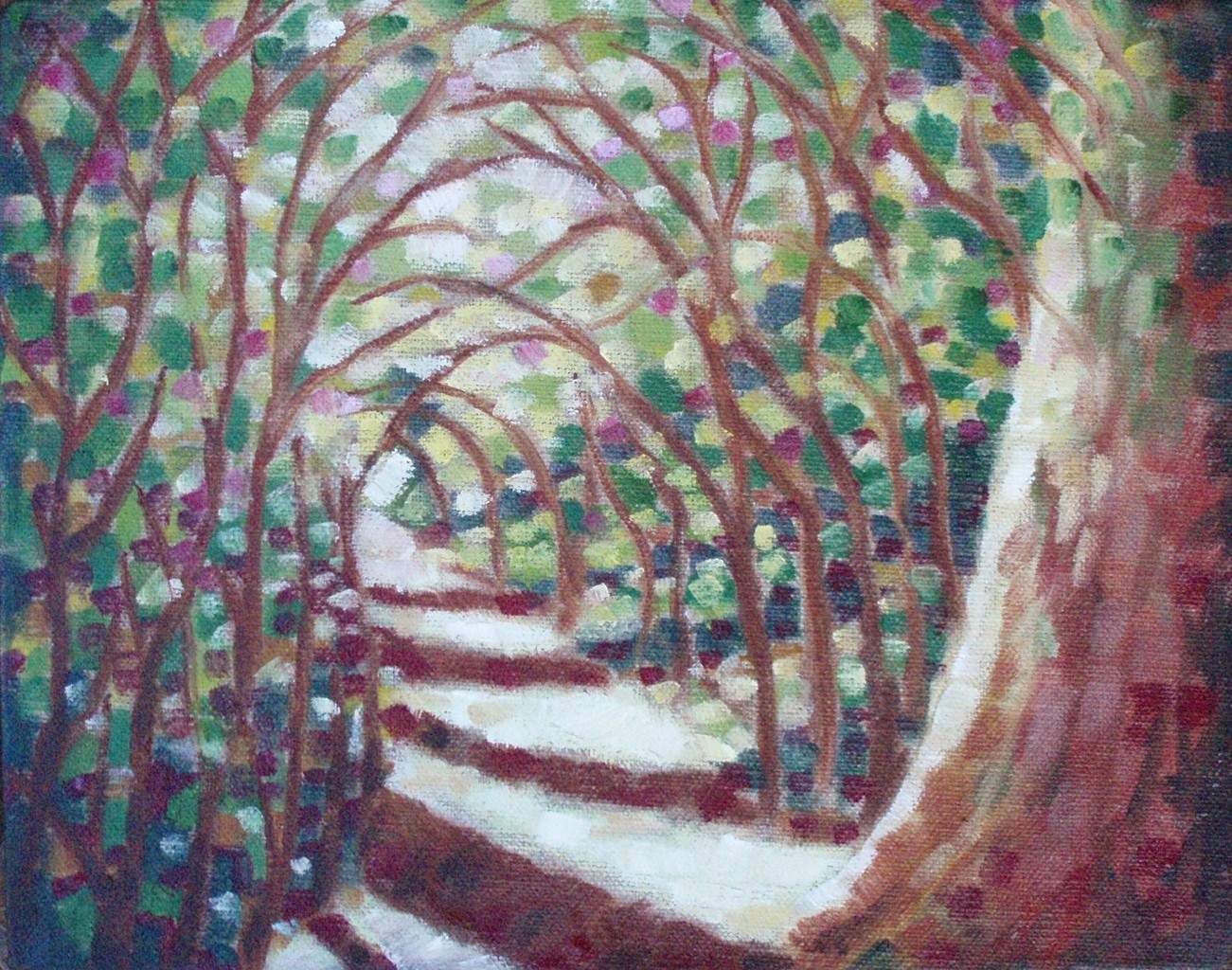This is an article I wrote for Island Arts Magazine a few years ago. Daily painting is a great motivator, block breaker, and developmental aid, as well as being fun!
I was first introduced to the movement of daily painting by artist Cindly Mawle, when we had booths next to each other at Island Arts Expo in 2009. She was in the middle of the 100 paintings in 100 days challenge, and told me how rewarding it was to push herself to produce a small painting every day. Fascinated, I took the challenge.
Having to come up with a new subject for a painting every day, no matter how small that painting may be, is a challenge in itself. Doing it for 100 days requires a great deal of discipline and just plain bone-headedness. It requires one to push one’s boundaries, to experiment, to try things one may never have attempted. My 100 days of painting resulted in a few gems and some that cried out to be painted over, but the work produced was not the main point of the exercise. Primarily, the value of taking the challenge was in how much I had grown as an artist, the confidence I had gained from stretching myself so far, and the freedom of expression that had been released within me.
Since completing the 100 paintings in 100 days challenge I have heard more and more about daily painting. Googling daily painting brings up 5 separate categories to choose from, and about 10 million results in a matter of seconds. Many sites are galleries, set up by individuals or groups, designed primarily for sales and promotion. Others are painting groups that are more involved in mutual support, others in issuing daily challenges. Many have been together since at least 2006, but the concept of daily painting is not really new – it’s just that now it’s easier for artists to connect with one another and share their ideas, no matter where in the world they are painting.
Some daily painters produce small paintings every day, with the emphasis on staying loose and simplifying things down to the basic elements of composition, rather than getting caught up in tight detail. They can work from simple still life set ups, plein air, reference photos, memory, or pure imagination. Other daily painters feel that painting every day is what is important, whether they complete a little painting in one sitting or are developing a work in progress. With some the intent is to produce a small piece of saleable art, with others it is solely to experience the process of painting, for others still it is a learning tool, or an inspirational device to warm them up for the real work of the day. Very often it can be a combination of any, or all of these elements.
For myself, I find it more valuable for daily painting to be approached as an exercise, rather than a means to produce a finished, saleable product. If the painting works, it’s a reward; if it doesn’t, there is nothing more freeing than to be able to scrub it off and use the canvas over again the next day. I don’t see this as a waste of paint because I’ve learned so much just from the attempt at doing.
My latest daily painting was inspired by a photo I took of a forest scene in Australia. First, I studied the photo to determine what I wanted to focus on – the way the light filtered through the trees and patterned the trail – then I simplified the composition. Though the tree ferns in the under-story were beautiful, including all that detail would have made it difficult to keep the looseness I was striving for. On an 8”x10” linen canvas I marked out basic tonal areas with watercolour pencil. When working in oils alla prima, colour placement is important – I painted quickly, but carefully, laying in the darker values first, always keeping in mind where my lights were to go. This painting took about an hour until I felt I’d caught the essence of the scene. A very wise person once said to stop painting before you think you are finished – great advice to follow. This one is a keeper.
Now that I’ve finished the 100 paintings challenge, I don’t do a daily painting every day, but I do my best to be involved in the painting process almost every day. Completing a painting daily, year in year out, can become forced and stagnating, and then the whole point of the exercise is lost. What is most important is to stay loose, stay inspired and have fun.

 Follow on Instagram
Follow on Instagram